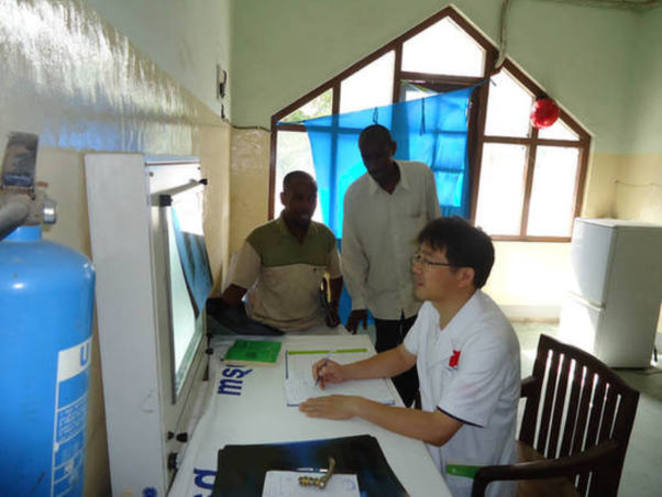| Chinese Medics in Tanzania
By WANG XINLING
|
 |
|
Li Xiaobing regularly reviews a week’s worth of x-ray images from all over the island. |
CHINA has sent more than 21,000 medical specialists to 65 developing countries in Asia, Africa, Europe, Latin America, and Oceania since the first dispatch of such professionals in April, 1963, and more than 260 million patients have received medical treatment. To date, 1,100 Chinese doctors are working in 48 countries in the world, 42 of which are in Africa.
On June 11, 2011 the 24th dispatch of Chinese medical workers from Jiangsu Province of China arrived on the island of Zanzibar, Tanzania. Of the 21 team members, 12 started work at Mnazi Mmoja Hospital, while the rest went to Pemba Island’s Abdulla Mzee Hospital which is an aid project of China.
Superb Skills Gain Trust
Mnazi Mmoja Hospital, covering an area of four hectares, is the largest public hospital on Zanzibar Island with 400 inpatient beds. This hospital serves one million residents on the island and in surrounding areas. It has an advanced ophthalmological center sponsored by China and an AIDS center sponsored by the U.S.
In Africa, due to intense sunshine, there is a high incidence of cataract, and it happens even among lower age groups. The ophthalmological center mentioned above was sponsored by China’s Jiangsu Province in 2009, and over the past two years it has developed into a well-established one. Geng Ning, the second Chinese doctor introduced to the center, says, “It receives 300 outpatients per day and the procedures and administrative level are close to that in our country.” Four doctors in the center are responsible to see the patients, and the most difficult or surgery-related cases are turned to Dr. Geng and director of the center. For two months, repetitive cases of glaucoma, some of which even led to blindness, caught Geng’s attention. She commented, “The blindness caused by cataract can be cured, while those caused by glaucoma can’t. We’ve made progress in the treatment of cataracts, but we should focus more on the prevention and treatment of glaucoma.” Geng’s predecessor, the founder of the ophthalmological center, performed 1,500 operations. This number has always inspired Geng Ning to work harder.
|
